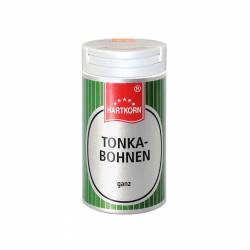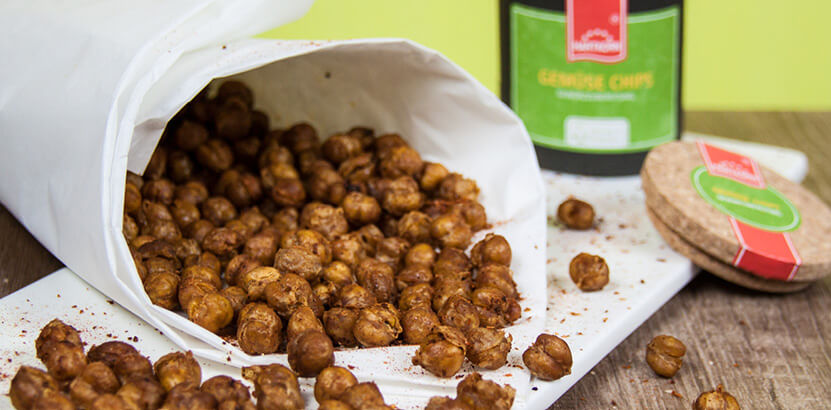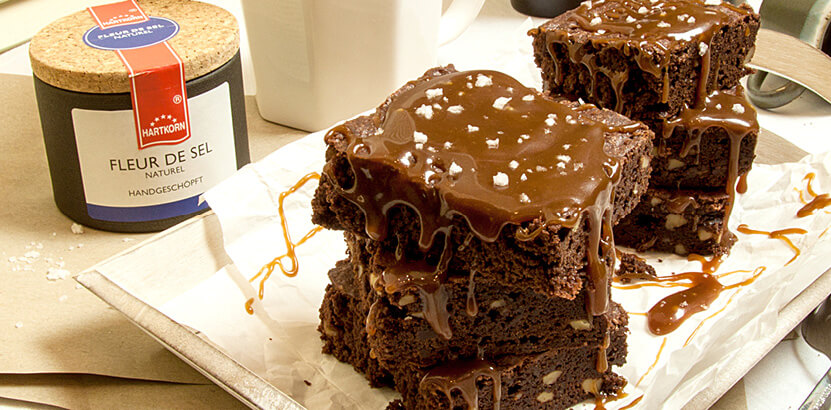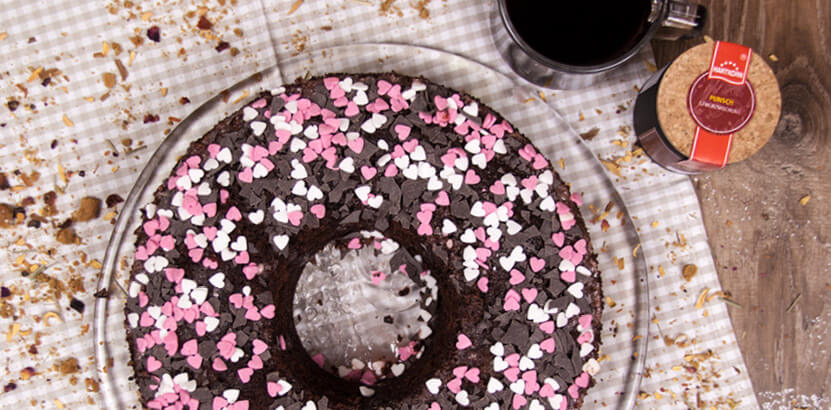Botanical family: origin: Classification: spice shape: flavor: odor: use: tip: Recipe suggestion: knowledge: Botany: Home & Distribution: cultivation & extraction: history: Tonka bean
General information
Use
Things to know
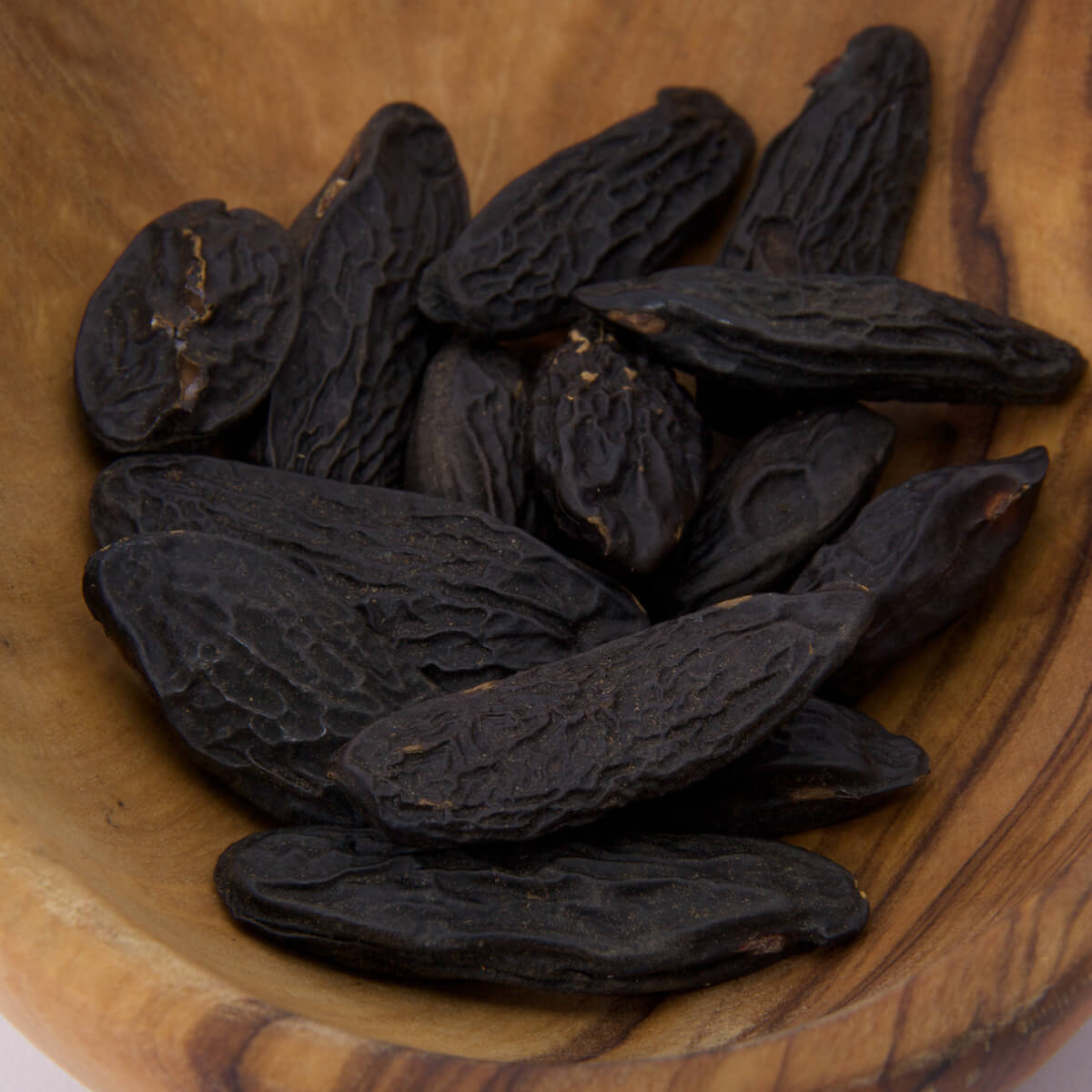 Botanical name:
Botanical name:
Dipteryx odorata [Aubl.] Willd.
butterfly blossom plants
South America
spice
seed
sweetish aromatic
sweetish aromatic
Its exceptional aroma makes it particularly suitable for desserts, such as cakes, panna cotta or créme brûlée. For cream or milk-based desserts, the beans are boiled for about ten minutes.
The aroma of the tonka bean is so intense that it can be used up to five times when cooked in milk.
Cheesecake with Tonka bean: crumble 250 g of wholemeal cookies. Melt 100 g butter in a pot at medium heat and brown it golden brown. Remove from the heat and mix well together with the cookie flour in a bowl. Fill the bottom of a springform pan (Ø 26 cm) with the mixture and press down properly. Bake the laid out form for about 10 minutes. Then mix 400 g Schichtkäse, 150 g créme fraîche and 350 g cream cheese, add 150 g sugar, 2 grated Tonka beans and 4 eggs. Mix the ingredients to a smooth mixture. Tip the quark cream onto the slightly cooled base and bake at 150° for about 70 minutes. Leave the finished cake to rest for another 10 minutes in a switched-off oven. Wash 750 g currants and put a handful of the most beautiful fruits aside for decoration. For the topping, bring the water with the sugar to the boil and add the remaining cleaned currants. Boil the fruits down properly for about 5 minutes and then pass through a sieve.
Stir agar agar (natural gelling agent) with 1-2 tablespoons of cold water, add to the fruit puree and boil again for 5 minutes. Let the finished currant sauce cool down well and then pour it in portions on the cooled cake. Finally, arrange the panicles in the middle of the cheesecake.
Harvesting: After harvesting the fruits are cut open and the kernel, i.e. the tonka bean, is removed. However, their special aroma develops only through a fermentation process, which requires the kernel to be soaked in rum for a few days. The Tonka bean is then dried and unfolds its beguilingly sweet aroma.
The 18-20 m high growing tonka tree is a forest tree with elliptical leaves and purple flowers, which belongs to the legume family. Its woody pods contain only single seeds. The kernels resemble in the shape of a bean, slender and somewhat curved, about 4-5 cm long and 9-12 mm wide, covered with a thin, black, fat-like shiny, wrinkled seed skin, while the interior consisting of the seed lobes is light brown.
The home of the Tonka tree is the tropical rainforest in northern South America. It is often cultivated as a shade tree in cocoa plantations. The trade commodity comes mainly from wild stocks in Venezuela.
Tonka trees grown in cocoa plantations are harvested as soon as the fruits are ripe. After harvesting the fruits, they are cut open and the kernel, i.e. the tonka bean, is removed. However, its special aroma only develops through a fermentation process, which requires the kernel to be soaked in rum for a few days. The Tonka bean is then dried and thus develops its beguilingly sweet scent, which is due to the coumarin contained in the fermented fruits. Due to the toxins emitted by higher coumarin levels, very low limits are set in the EU. In the trade the Tonka bean is then completely available.
In South America it is said to have great magical and healing powers. One carries it as protective amulet against diseases. Carried in the purse, they are a sign of prosperity and success and are said to fulfill wishes.
http://de.wikipedia.org/wiki/Tonkabohne

